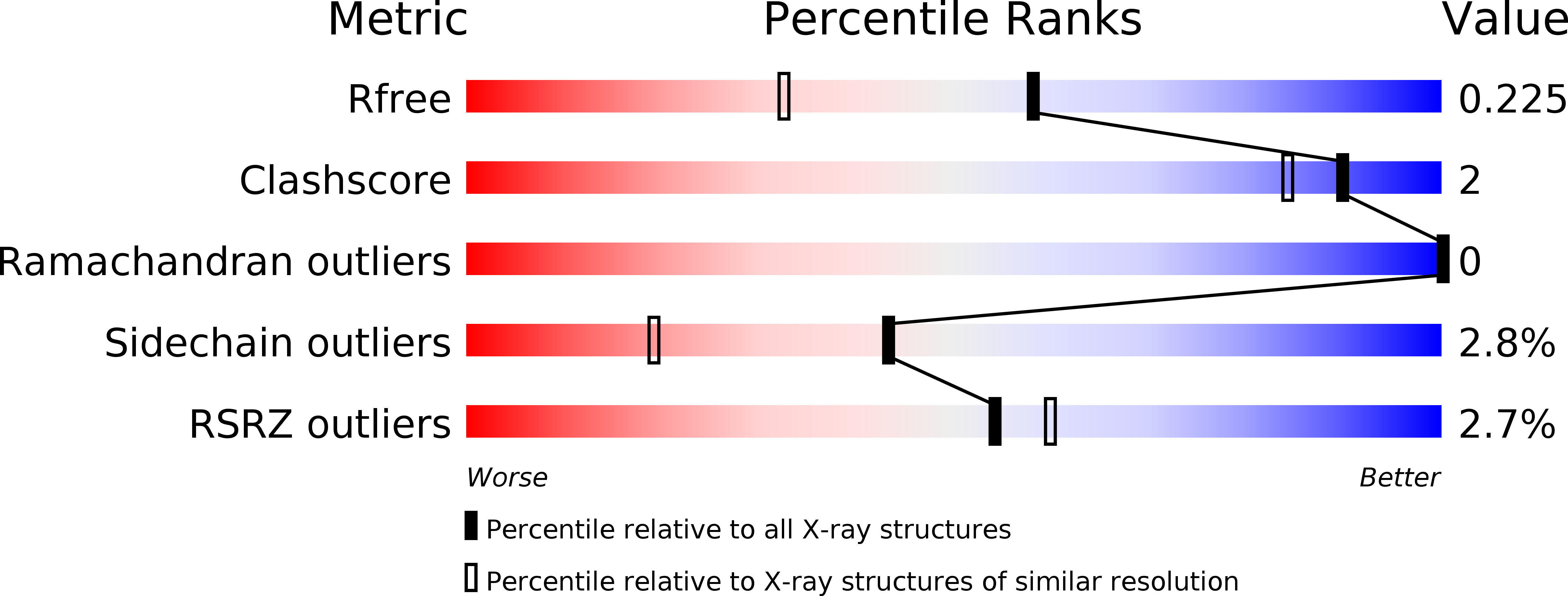
Deposition Date
2005-07-12
Release Date
2005-10-11
Last Version Date
2023-08-23
Entry Detail
PDB ID:
2A9K
Keywords:
Title:
Crystal structure of the C3bot-NAD-RalA complex reveals a novel type of action of a bacterial exoenzyme
Biological Source:
Source Organism:
Homo sapiens (Taxon ID: 9606)
Clostridium botulinum D phage (Taxon ID: 29342)
Clostridium botulinum D phage (Taxon ID: 29342)
Host Organism:
Method Details:
Experimental Method:
Resolution:
1.73 Å
R-Value Free:
0.22
R-Value Work:
0.18
R-Value Observed:
0.18
Space Group:
P 1 21 1


